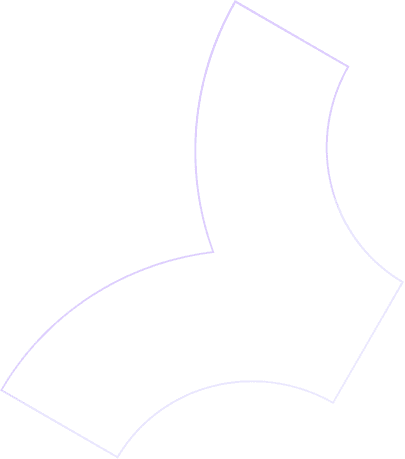The Power Of Using a Mascot For Pest Control: Jonas Olson

Author:

Most pest control companies don’t use a mascot. That’s a missed opportunity. In a world full of generic names like Tactical Pest or Advanced Exterminators, having a recognizable character gives you an edge that most competitors simply don’t have.
At Pest Badger, our entire brand revolves around Buggy the Badger. He’s become the face of our company and one of the most important tools we’ve ever used to grow. Here’s why a mascot can completely change your business, and how to use one the right way.
The History Behind Character Branding
Character branding has been around forever. Think about Quaker Oats or the Michelin Man. These mascots date back to the 1800s. They’re not new concepts, but the home service industry has been slow to adopt them.
In our industry, most people went the Yellow Pages route and just picked a name that started with "A" to get listed first. But branding has evolved since then, and mascots are a big part of that evolution. They create immediate emotional connection, help you stand out in your market, and make your brand memorable in a way that a plain logo or name simply can’t.
Why We Built Our Brand Around Buggy the Badger

When I started Pest Badger, I didn’t want the brand to be about me. I wanted to build something that could stand on its own. So we created Buggy. He’s friendly, trustworthy, and visually memorable. He represents everything we stand for as a company.
We even have different versions of Buggy depending on the service. On our lawn trucks, he’s pushing a fertilizer spreader. On pest control trucks, he’s wearing a backpack sprayer. In every case, he’s showing people exactly what we do, without needing words.
Buggy is on our signs, trucks, email campaigns, and text messages. He’s not just a graphic. He’s the voice of the brand. We even refer to him as our after-hours marketing manager.
Mascots Build Trust and Recognition
Humans are great at recognizing faces and characters, especially animals. That’s why Buggy resonates so quickly with our customers. People feel like they know him. He’s warm, soft, and approachable. He speaks in a friendly, witty tone, especially since we’re primarily communicating with women.
You can’t always be the fun, happy face of the brand in every situation. But your mascot can. Buggy lets us show up in ways that are bigger than just me. He’s scalable. He’s consistent. And he brings a level of personality to the brand that people connect with instantly.
Mascots Are a Marketing Engine
Once you have a mascot, the opportunities are endless. Imagine giving away Buggy plush toys to kids after service. Dressing up in a Buggy costume for parades and community events. Handing out stickers. Creating TikToks where kids chase the truck down the street yelling, "There’s the TikTok pest guys!"
You want to be the brand that kids grow up with. If your mascot is fun, visible, and part of local events, those kids will remember you. One of our team members told me his younger brother, a fourth grader, said he wanted to be "a Pest Badger" when he grows up. That’s when you know it’s working.
Traits of a Great Mascot
Your mascot needs to match your company’s personality. I’m not a serious, corporate guy. I want our company to feel approachable and fun, so Buggy reflects that. He’s friendly, outgoing, and designed to speak to our target market.
Some companies use superheroes or animals. I’ve seen dogs used really well. My mentor Jonathan at CitiTurf uses a dog named Chester. Chester appears as a detective for pest control and as a butler for lawn services. It’s a creative way to connect a mascot with different service types and different customer expectations.

You can even take it further with AI. We’re already imagining a future where Buggy is doing TikToks, narrating videos, or becoming a digital spokesperson that people can interact with across platforms.
Final Thoughts
Using a mascot isn’t just about looking cool or standing out at events. It’s about building a lasting connection with your community. A well-designed mascot becomes a core part of your brand, your marketing, and your culture. People know who you are before they ever speak to you.
Whether you're driving a pink truck with a fogger-spraying badger or handing out mascot dolls in a parade, your mascot becomes the reason people remember your company. That’s the goal.
If you’re serious about long-term branding in pest control, consider creating a mascot that represents your mission, your culture, and your customers. It might just become the most powerful asset you’ve got.
More on Brand For Pest Control

Jonas Olson
Co-Founder
Jonas Olson is the CEO of Pest Badger, a successful pest control company doing $10M+ in annual revenue and 250k+ total followers on social media. Jonas is also the host of Pest Control Millionaire, a top pest control podcast. Additionally, he is the co-owner of Pest Control Millionaires, a marketing program for pest control owners.
The Power Of Using a Mascot For Pest Control: Jonas Olson

Author:

Most pest control companies don’t use a mascot. That’s a missed opportunity. In a world full of generic names like Tactical Pest or Advanced Exterminators, having a recognizable character gives you an edge that most competitors simply don’t have.
At Pest Badger, our entire brand revolves around Buggy the Badger. He’s become the face of our company and one of the most important tools we’ve ever used to grow. Here’s why a mascot can completely change your business, and how to use one the right way.
The History Behind Character Branding
Character branding has been around forever. Think about Quaker Oats or the Michelin Man. These mascots date back to the 1800s. They’re not new concepts, but the home service industry has been slow to adopt them.
In our industry, most people went the Yellow Pages route and just picked a name that started with "A" to get listed first. But branding has evolved since then, and mascots are a big part of that evolution. They create immediate emotional connection, help you stand out in your market, and make your brand memorable in a way that a plain logo or name simply can’t.
Why We Built Our Brand Around Buggy the Badger

When I started Pest Badger, I didn’t want the brand to be about me. I wanted to build something that could stand on its own. So we created Buggy. He’s friendly, trustworthy, and visually memorable. He represents everything we stand for as a company.
We even have different versions of Buggy depending on the service. On our lawn trucks, he’s pushing a fertilizer spreader. On pest control trucks, he’s wearing a backpack sprayer. In every case, he’s showing people exactly what we do, without needing words.
Buggy is on our signs, trucks, email campaigns, and text messages. He’s not just a graphic. He’s the voice of the brand. We even refer to him as our after-hours marketing manager.
Mascots Build Trust and Recognition
Humans are great at recognizing faces and characters, especially animals. That’s why Buggy resonates so quickly with our customers. People feel like they know him. He’s warm, soft, and approachable. He speaks in a friendly, witty tone, especially since we’re primarily communicating with women.
You can’t always be the fun, happy face of the brand in every situation. But your mascot can. Buggy lets us show up in ways that are bigger than just me. He’s scalable. He’s consistent. And he brings a level of personality to the brand that people connect with instantly.
Mascots Are a Marketing Engine
Once you have a mascot, the opportunities are endless. Imagine giving away Buggy plush toys to kids after service. Dressing up in a Buggy costume for parades and community events. Handing out stickers. Creating TikToks where kids chase the truck down the street yelling, "There’s the TikTok pest guys!"
You want to be the brand that kids grow up with. If your mascot is fun, visible, and part of local events, those kids will remember you. One of our team members told me his younger brother, a fourth grader, said he wanted to be "a Pest Badger" when he grows up. That’s when you know it’s working.
Traits of a Great Mascot
Your mascot needs to match your company’s personality. I’m not a serious, corporate guy. I want our company to feel approachable and fun, so Buggy reflects that. He’s friendly, outgoing, and designed to speak to our target market.
Some companies use superheroes or animals. I’ve seen dogs used really well. My mentor Jonathan at CitiTurf uses a dog named Chester. Chester appears as a detective for pest control and as a butler for lawn services. It’s a creative way to connect a mascot with different service types and different customer expectations.

You can even take it further with AI. We’re already imagining a future where Buggy is doing TikToks, narrating videos, or becoming a digital spokesperson that people can interact with across platforms.
Final Thoughts
Using a mascot isn’t just about looking cool or standing out at events. It’s about building a lasting connection with your community. A well-designed mascot becomes a core part of your brand, your marketing, and your culture. People know who you are before they ever speak to you.
Whether you're driving a pink truck with a fogger-spraying badger or handing out mascot dolls in a parade, your mascot becomes the reason people remember your company. That’s the goal.
If you’re serious about long-term branding in pest control, consider creating a mascot that represents your mission, your culture, and your customers. It might just become the most powerful asset you’ve got.
More on Brand For Pest Control

Jonas Olson
Co-Founder
Jonas Olson is the CEO of Pest Badger, a successful pest control company doing $10M+ in annual revenue and 250k+ total followers on social media. Jonas is also the host of Pest Control Millionaire, a top pest control podcast. Additionally, he is the co-owner of Pest Control Millionaires, a marketing program for pest control owners.
The Power Of Using a Mascot For Pest Control: Jonas Olson

Author:




Most pest control companies don’t use a mascot. That’s a missed opportunity. In a world full of generic names like Tactical Pest or Advanced Exterminators, having a recognizable character gives you an edge that most competitors simply don’t have.
At Pest Badger, our entire brand revolves around Buggy the Badger. He’s become the face of our company and one of the most important tools we’ve ever used to grow. Here’s why a mascot can completely change your business, and how to use one the right way.
The History Behind Character Branding
Character branding has been around forever. Think about Quaker Oats or the Michelin Man. These mascots date back to the 1800s. They’re not new concepts, but the home service industry has been slow to adopt them.
In our industry, most people went the Yellow Pages route and just picked a name that started with "A" to get listed first. But branding has evolved since then, and mascots are a big part of that evolution. They create immediate emotional connection, help you stand out in your market, and make your brand memorable in a way that a plain logo or name simply can’t.
Why We Built Our Brand Around Buggy the Badger

When I started Pest Badger, I didn’t want the brand to be about me. I wanted to build something that could stand on its own. So we created Buggy. He’s friendly, trustworthy, and visually memorable. He represents everything we stand for as a company.
We even have different versions of Buggy depending on the service. On our lawn trucks, he’s pushing a fertilizer spreader. On pest control trucks, he’s wearing a backpack sprayer. In every case, he’s showing people exactly what we do, without needing words.
Buggy is on our signs, trucks, email campaigns, and text messages. He’s not just a graphic. He’s the voice of the brand. We even refer to him as our after-hours marketing manager.
Mascots Build Trust and Recognition
Humans are great at recognizing faces and characters, especially animals. That’s why Buggy resonates so quickly with our customers. People feel like they know him. He’s warm, soft, and approachable. He speaks in a friendly, witty tone, especially since we’re primarily communicating with women.
You can’t always be the fun, happy face of the brand in every situation. But your mascot can. Buggy lets us show up in ways that are bigger than just me. He’s scalable. He’s consistent. And he brings a level of personality to the brand that people connect with instantly.
Mascots Are a Marketing Engine
Once you have a mascot, the opportunities are endless. Imagine giving away Buggy plush toys to kids after service. Dressing up in a Buggy costume for parades and community events. Handing out stickers. Creating TikToks where kids chase the truck down the street yelling, "There’s the TikTok pest guys!"
You want to be the brand that kids grow up with. If your mascot is fun, visible, and part of local events, those kids will remember you. One of our team members told me his younger brother, a fourth grader, said he wanted to be "a Pest Badger" when he grows up. That’s when you know it’s working.
Traits of a Great Mascot
Your mascot needs to match your company’s personality. I’m not a serious, corporate guy. I want our company to feel approachable and fun, so Buggy reflects that. He’s friendly, outgoing, and designed to speak to our target market.
Some companies use superheroes or animals. I’ve seen dogs used really well. My mentor Jonathan at CitiTurf uses a dog named Chester. Chester appears as a detective for pest control and as a butler for lawn services. It’s a creative way to connect a mascot with different service types and different customer expectations.

You can even take it further with AI. We’re already imagining a future where Buggy is doing TikToks, narrating videos, or becoming a digital spokesperson that people can interact with across platforms.
Final Thoughts
Using a mascot isn’t just about looking cool or standing out at events. It’s about building a lasting connection with your community. A well-designed mascot becomes a core part of your brand, your marketing, and your culture. People know who you are before they ever speak to you.
Whether you're driving a pink truck with a fogger-spraying badger or handing out mascot dolls in a parade, your mascot becomes the reason people remember your company. That’s the goal.
If you’re serious about long-term branding in pest control, consider creating a mascot that represents your mission, your culture, and your customers. It might just become the most powerful asset you’ve got.
More on Brand For Pest Control

Jonas Olson
Co-Founder
Jonas Olson is the CEO of Pest Badger, a successful pest control company doing $10M+ in annual revenue and 250k+ total followers on social media. Jonas is also the host of Pest Control Millionaire, a top pest control podcast. Additionally, he is the co-owner of Pest Control Millionaires, a marketing program for pest control owners.